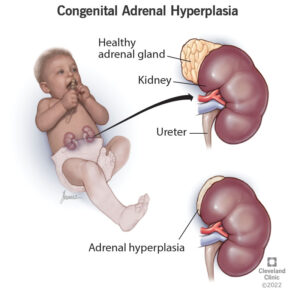Understanding Congenital Adrenal Hyperplasia (CAH)
Congenital Adrenal Hyperplasia (CAH) is a group of inherited disorders that affect the adrenal glands, leading to a disruption in hormone production. This vital condition, albeit rare, holds a multitude of complexities that warrant a closer examination. As we delve into the nuances of CAH, we will uncover its etiology, clinical manifestations, and the importance of comprehensive management to improve the quality of life for those affected.
What is Congenital Adrenal Hyperplasia?
At its core, CAH results from a deficiency in enzymes crucial for cortisol production. The adrenal glands, nestled atop the kidneys, are responsible for producing essential hormones, such as:
- Cortisol: A hormone vital for regulating metabolism and response to stress.
- Mineralocorticoids: Hormones that monitor blood pressure and electrolyte balance.
- Androgens: Hormones that play a key role in male traits and reproductive activity.
Individuals with CAH are often unable to produce adequate cortisol, prompting an increase in androgen levels. This hormonal imbalance can lead to a variety of clinical features, including ambiguous genitalia in newborn females and early onset of puberty in boys, substantially affecting psychosocial aspects of life.
Clinical Presentation of CAH
The clinical presentation of CAH can vary significantly based on the severity of the enzyme deficiency. The most common form is 21-hydroxylase deficiency, which can be categorized into:
- Classic CAH: Manifesting in severe symptoms within the first few weeks of life, including adrenal crisis and significant hormonal imbalance.
- Non-classic CAH: Often presenting later in childhood or adulthood, with milder symptoms such as irregular menstruation or infertility.
Recognizing the early signs of CAH is pivotal, as prompt diagnosis and intervention can mitigate complications and improve outcomes. Genetic screening and hormonal assessments remain invaluable tools in diagnosing this condition.
The Importance of Management
Managing CAH effectively requires a multidisciplinary approach, focusing on:
- Hormone Replacement Therapy: Administering glucocorticoids to compensate for cortisol deficiency.
- Monitoring Growth and Development: Regular follow-ups to ensure normal growth patterns and psychological well-being.
- Patient Education: Empowering families and patients with knowledge about CAH and its implications.
When managed properly, individuals with CAH can lead fulfilling and healthy lives. The importance of early intervention and lifelong monitoring cannot be overstated, as these factors can significantly enhance their physical and emotional well-being.
Conclusion: A Path Forward
In conclusion, Congenital Adrenal Hyperplasia represents a profound intersection of genetics, endocrinology, and psychosocial health. Understanding its complexities enables patients and families to navigate the challenges posed by this condition effectively. By fostering awareness and advocating for comprehensive care, we can ensure that those affected by CAH receive the support they need to thrive.
As we continue to deepen our understanding of CAH, let us join together in raising awareness and facilitating a supportive environment for those navigating this intricate health landscape.

